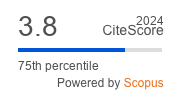Article | Open Access
The Co-’s of Co-Living: How the Advertisement of Living Is Taking Over Housing Realities
| Views: | 4424 | | | Downloads: | 3162 |
Abstract: Co-living penetrated the urban realm both as a housing format and a neologism with fluid meaning. The co-living concept was developed by various companies in the early 2010s claiming to provide a valuable alternative to flat living in highly competitive rental markets. As a real estate product, co-living consists of all-inclusive rental plans of furnished rooms connected to fully equipped communal areas, conceived both for short-term and long-term stays. The few realized buildings combine collective spaces as laundries and co-working spaces with rooms as small as nine square meters. This kind of layout explicitly targets the urban middle-classer willing to live simultaneously together and apart. Differently from other housing formats, co-living is promoted through the jargon of sharing economy more than one of real-estate agencies. The co-root is commonly explained in companies’ recurring website section “What’s co-living?” as collective-living, convenient-living, and community-living. The emphasis on communitarian living echoes the semantics of co-housing. However, co-living communities differ radically from co-housing ones, based on a bottom-up initiative of inhabitants subscribing to a contract of cohabitation. In contrast, a co-living community is generated exclusively through economic accessibility. This article gives a critical insight into the mutated meanings of housing in the digital era by analysing co-living companies’ narratives and their spatial counterpart in realized buildings. The evidence collected by co-living promotion contributes to addressing a broader shift in real estate towards emphasizing the experiential dimension of lifestyle over space and shelter as primary housing features.
Keywords: co-living; housing; living; real estate
Published:
© Federico Coricelli. This is an open access article distributed under the terms of the Creative Commons Attribution 4.0 license (http://creativecommons.org/licenses/by/4.0), which permits any use, distribution, and reproduction of the work without further permission provided the original author(s) and source are credited.


